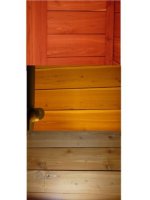_RaT_
Super Member
- Joined
- Apr 19, 2000
- Messages
- 5,855
- Location
- Peoples Republic of Northern CA.
- Tractor
- Kioti 3510-SE HST
hockeypuck said:At first look CFL's seem to be a no brainer, but after further review I will have to put it into the same category as the Prius and ethanol. You buy them and they make you fell good, but they are not very echo friendly after all. CFL's do have alot of mercury in them. Proper disposal will be difficult to manage. I read on one web site that they actually recommend cutting up the piece of carpet that it broke on. The prius has too many byproducts from its battery production and disposal to really make it worth while buying and ethanol takes more energy to produce, than it actually produces. It also is driving up the cost of my cereal. Using food to make fuel, there is something just plain wrong with that.
So in short, use halogen lights, drive a Hummer, and drill in Anwar.
Actually they have very little mercury in them but then this has already been discussed.

